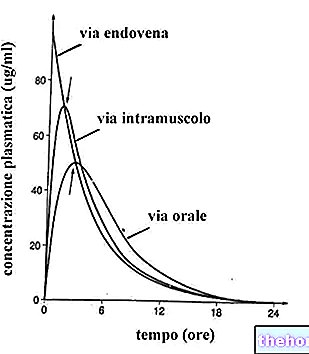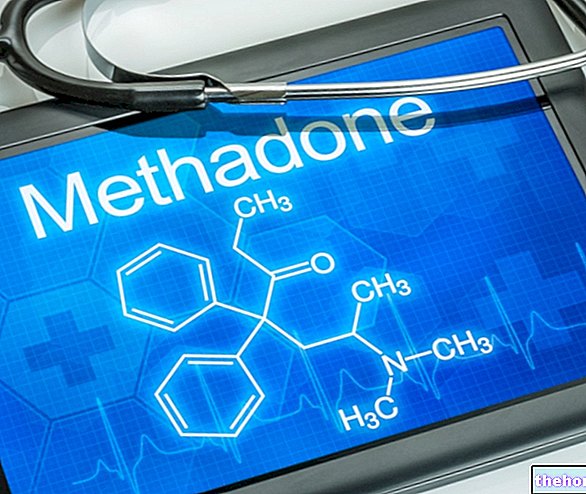Definition
In medical terms, "high cholesterol" is called hypercholesterolemia: it is a pathological condition in which blood cholesterol levels are much higher than normal (> 200mg / dl). Hypercholesterolemia is heavily influenced by the genetic component; therefore, patients who suffer from it, already at a young age, tend to produce an abnormal amount of cholesterol.
Causes
Although many patients with high cholesterol are genetically predisposed, there are certainly cases in which hypercholesterolemia is linked to an unbalanced diet, rich in lipids and carbohydrates, obesity / overweight and a sedentary lifestyle.
- Risk factors: smoking (tends to decrease the levels of "good cholesterol" (HDL) in the blood), diabetes (increases the mobilization of lipids), hypothyroidism (increases cholesterolemia), menopause (increases in androgens)
Symptoms
High cholesterol, by itself, does not cause any symptoms: only blood tests can identify the disease with certainty. However, hypercholesterolemia increases the risk of cardiovascular disease, atherosclerosis, angina pectoris, ischemia, stroke.
Natural Cures
Diet and Nutrition
The information on Hypercholesterolemia - Medicines for the Treatment of High Cholesterol is not intended to replace the direct relationship between health professional and patient. Always consult your doctor and / or specialist before taking Hypercholesterolemia - Medicines to Treat High Cholesterol.
Medicines
High cholesterol - particularly when associated with diabetes, hypertension, obesity (metabolic syndrome) and smoking - exponentially increases the risk of cardiovascular disease; for this reason, the monitoring of blood cholesterol values is part of the prevention rules of cardiovascular diseases, especially for patients with a genetic predisposition to the disease, for the obese and for all individuals who have already suffered a cardiovascular event in the past .
The dietary correction approach is the most important preventive measure to avoid hypercholesterolemia: it is recommended to reduce the intake of dietary cholesterol and saturated fats introduced with the diet, as well as preferring healthy foods (such as cereals, legumes, vegetables, wholemeal products) to hyperlipidic ones (such as butter, dairy products, cheeses) and salt.
Clearly, it is recommended to combine regular physical exercise with a balanced diet.
The use of lipid-lowering drugs may be a "possible option when the diet associated with sport is not sufficient to maintain a balanced level of cholesterol in the blood; furthermore, it should be remembered that the administration of drugs should not replace an ideal diet, nor sport, rather it must be a complement to them.
The following are the classes of drugs most used in the therapy against high cholesterol, and some examples of pharmacological specialties; it is up to the doctor to choose the most suitable active ingredient and dosage for the patient, based on the severity of the disease, the state of health of the patient and his response to treatment:
Fibrates: indicated for patients with hypercholesterolemia who have high levels of triglycerides in the blood. They are widely used for the treatment of dysplidemia in general:
- Gemfibrozil (eg. Lopid, Genlip, Gemfibrozil DOC): for the treatment of hypercholesterolemia, the normally recommended dosage is 600 mg of active, to be taken orally, twice a day, preferably 30 minutes before breakfast and dinner. .
- Fenofibrate (eg Lipsin, Fulcro, Fenolibs, Lipofene): the dosage involves taking a dose of active equal to 200 mg (1 capsule), once a day.
- Clofibrate (eg Arterial, Clopir, Ellemger): indicatively, take 500 mg of the drug, orally, 4 times a day.
It is recommended to always combine a balanced diet and constant physical exercise
Statins: they block the enzyme HMG-CoA-reductase, useful for the synthesis of cholesterol; statins act with a double mechanism of action: since they increase the synthesis of "good" cholesterol (HDL) and inhibit the production of cholesterol bad endogenous (LDL). They are the most prescribed drugs to treat high cholesterol. These active ingredients are also indicated to "absorb" the cholesterol deposited on the walls of the arteries, a useful feature for treating coronary disorders in general.
- Atorvastatin (eg Totalip, Torvast, Xarator): this statin is probably the most used in therapy for the treatment of high cholesterol, together with simvastatin. Typically, the starting dose ranges from 10 to 40 mg per day, to be taken orally. The dose of 40 mg per day is indicated for patients requiring a decrease in bad cholesterol greater than 45%. Continue with this dosage for 2-4 weeks. The maintenance dose foresees the assumption of 10-80 mg of active per day. Consult your doctor.
- Lovastatin (eg. Lovinacor, Tavacor, Rextat): start the treatment with a dose of 20 mg of the drug, to be taken once a day, together with the meal. The maintenance dose involves taking 10-80 mg per day, possibly divided into two doses. The drug is also available in the form of slow-release tablets: in this case, start therapy with 20-40-60 mg of the drug, to be taken once a day, before going to bed; patients who require a small reduction in bad cholesterol can only take 10 mg of the drug per day. The maintenance dose ranges from 10 to 60 mg per day, depending on the severity of the condition. The active ingredient is also available in association with niacin.
- Simvastatin (eg Zocor, Simvastat, Omistat, Quibus, Setorilin). It is recommended to start treatment with a dose ranging from 10 to 20 mg, to be taken orally, once a day. The maintenance dose involves taking 5-40 mg of active daily (once a day, in the evening). Sometimes the drug is formulated with other active ingredients, such as sitagliptin (eg Juvisync), useful for fighting diabetes in the context of hypercholesterolemia, and ezetimibe (eg Vytorin).
- Fluvastatin (eg. Lescol, Lipaxan, Primesin): start therapy with a dose of the drug ranging from 20 to 40 mg per day, once a day, before bedtime. The maintenance dose ranges from 20 to 80 mg per day.
- Pravastatin (eg Selectin, Langiprav, Sanaprav). Indicatively, for the treatment of hypercholesterolemia, take the drug at a dosage of 40 mg, orally, once a day. For the maintenance dose, it is possible to take 40-80 mg of the drug per day. Consult your doctor. The drug can also be formulated with other active ingredients, such as, for example, Acetylsalicylic acid, antiplatelet agent: the two active ingredients exert their therapeutic activity in synergy, both for the treatment of high cholesterol (pravastatin), and to treat and prevent ischemia and myocardial disorders (acetylsalicylic acid). Furthermore, pravastatin is also available in combination with Fenofibrate (eg Pravafenix), as tablets composed of 40 mg of pravastatin and 160 mg of fenofibrate: in this case, it is recommended to take one tablet of the drug, once a day, combining drug treatment to a healthy diet and regular physical exercise.
Selective inhibitors of intestinal absorption of cholesterol: drugs exert their therapeutic activity on biliary cholesterol and on that introduced with the diet.
- Ezetimibe (eg. Goltor, Inegy, Zeklen, Zetia): in general, for the treatment of high cholesterol, it is recommended to take the drug at a dosage of 10 mg, with or without food, once a day. As mentioned above, the drug is also available in combination with simvastatin (Vytorin).
Niacin: (high doses) often associated with statins (especially simvastatin). Niacin (eg Niaspan), given in high doses, increases HDL and decreases triglycerides and bad cholesterol. It is recommended to start therapy for hypercholesterolemia with 100 mg of the drug, to be taken 3 times a day, with or without food. The maintenance dose is to take 1-2 grams of the drug, 3 times a day, with or without food. Do not exceed 6 grams per day. It is recommended to follow a balanced diet and to practice constant physical exercise. As an alternative to niacin, it is possible to take Acipimox (eg Olbetam), at a dose of 250 mg, 2- 3 times a day. Consult your doctor.
Bile acid sequestering resins: these drugs are useful for promoting the fecal excretion of bile acids, therefore, in the intestine, they are able to reduce the reabsorption of cholesterol.
- Colestipol (eg. Colestid): start administering the drug at a dose of 5 grams of granules per os, 1-2 times a day; alternatively, take 2 grams (tablets), 1-2 times a day. The maintenance dose for the treatment of hypercholesterolemia can be increased up to 2-5 grams per day, every 1-2 months.
- Cholestyramine (eg Questran): in general, it is recommended to start the treatment for high cholesterol with a dose of medication equal to 4 grams, to be taken orally, twice a day. For the maintenance dose, it is recommended to administer 4 grams of the drug orally, 3 times a day, before meals. However, the dose should be fine-tuned by your doctor, based on the severity of the condition and response to treatment.
- Colesevelam (eg Cholestagel): take 4-6 tablets (625 mg) per day, preferably in conjunction with meals. If necessary, take the drug in divided doses during the 24 hours. The drug is also available in combination with statins.
In addition to correcting eating habits, practicing sports and, when necessary, taking drugs, patients with hypercholesterolemia should pay particular attention to all those risk factors involved in the manifestation of coronary heart disease; to do this, it is necessary to maintain regular blood pressure, control blood sugar, not smoke and, if necessary, reduce weight.




























